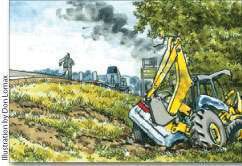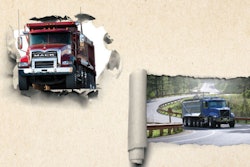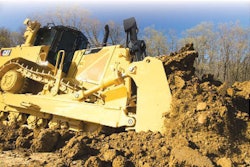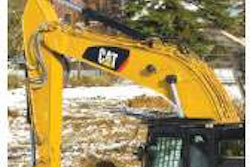Safe hauling

The accident: Going down a busy Interstate, a construction supervisor was hauling a backhoe on a trailer. The backhoe flipped off the trailer, falling onto a minivan. Both the minivan and backhoe slid down an embankment, with the backhoe landing on top of the minivan. The accident killed one person and injured three others.
The bottom line: Witnesses said they saw the driver lose control of the truck just before the backhoe broke loose from its tie downs. The driver had previous citations for speeding and for unregistered/improper equipment.
Best practices
The majority of trailer accidents are attributable to human error rather than mechanical failure. Proper trailering requires a combination of knowledge, training and patience. Before you load a piece of equipment, you must know the rated capacity of the trailer, the tie down points, all hardware and your towing vehicle. It’s also crucial to know how and where to position the load on the trailer. If you position the equipment too far forward, you’ll lift the front of the towing vehicle and lose steering control. Too far back and you’ll lose traction and braking.
By the numbers
You’ll find the trailer’s capacity on the unit’s data plate. Exceeding capacity not only interferes with acceleration, handling and braking ability, it can also cause tire damage and premature axle and bearing failure. Check your truck’s Gross Vehicle Weight Rating and ensure you won’t exceed the Gross Combination Weight Rating when you add the trailer, load and other cargo.
Don’t drive the machine onto the trailer unless you’re trained to do so. Approximately half the fatal accidents that occur during equipment transport happen during loading or unloading of equipment. If possible, back the equipment onto the trailer so you can drive it off when unloading. If you don’t have a spotter, use the edge of a deck board as a reference point to drive in a straight line.
Using the weight of the machine, you’ll be able to calculate the Aggregate Working Load Limit to determine the number and capacity of tie downs. Whenever possible, use manufacturer-specified points and inspected, safety-rated tie-down assemblies. You should use at least Grade 70 transport chain and retire it if the chain has wear greater than 10 percent. Never use chain that is stretched, broken or twisted.
Check it again
Do a final walk around and check for anything you missed. Loose items left on the equipment can become a projectile. Once you’re on the road, you’re required to stop and check the load after 50 miles, and then every 150 miles or three hours of travel time, whichever comes first.
The information in this Safety Watch is from an accident report and from Vista Training’s Silver Series web-based training program “Transporting Heavy Equipment.” For more information, visit www.vista-training.com/the. This Safety Watch is for general information only.










